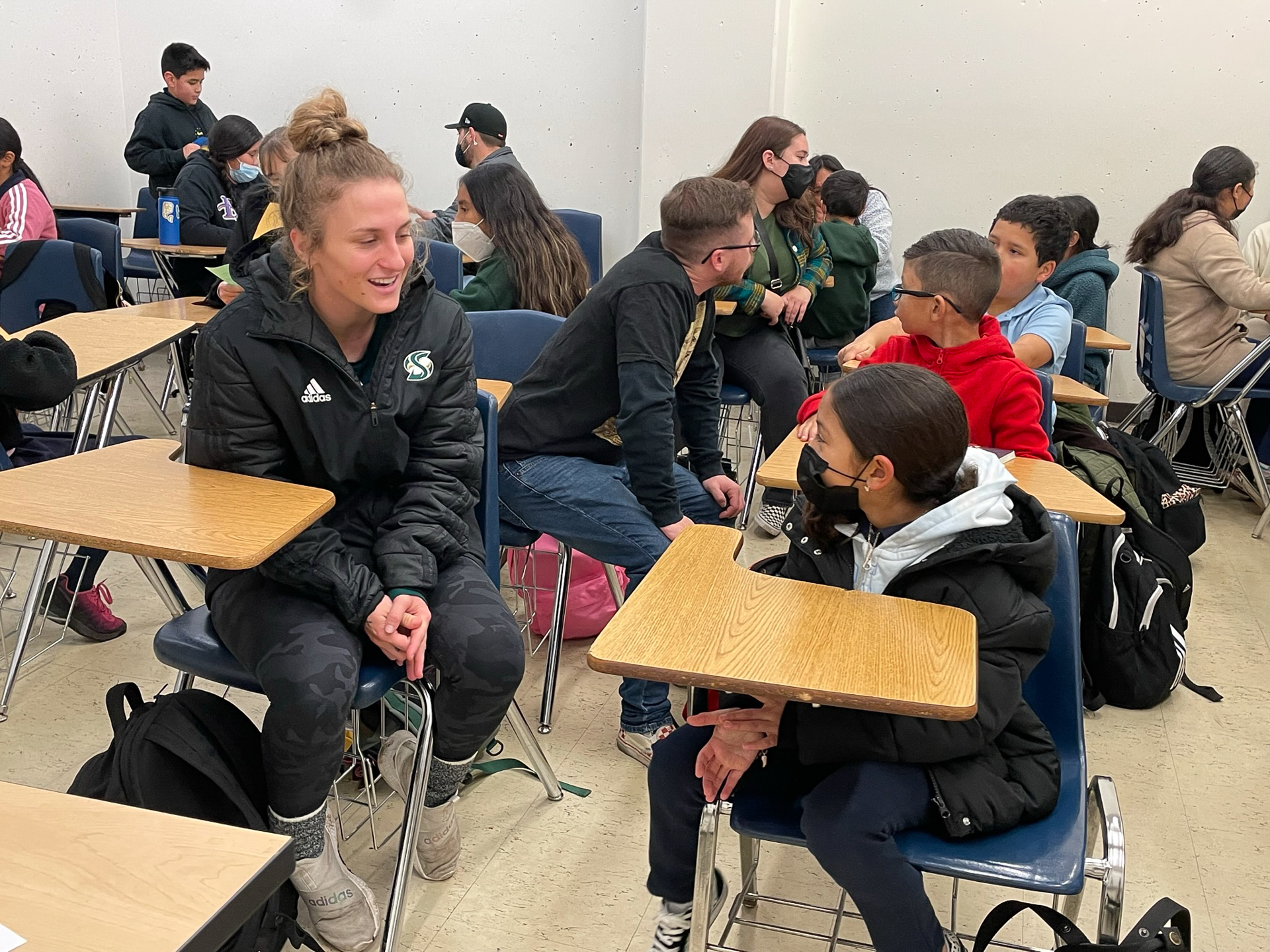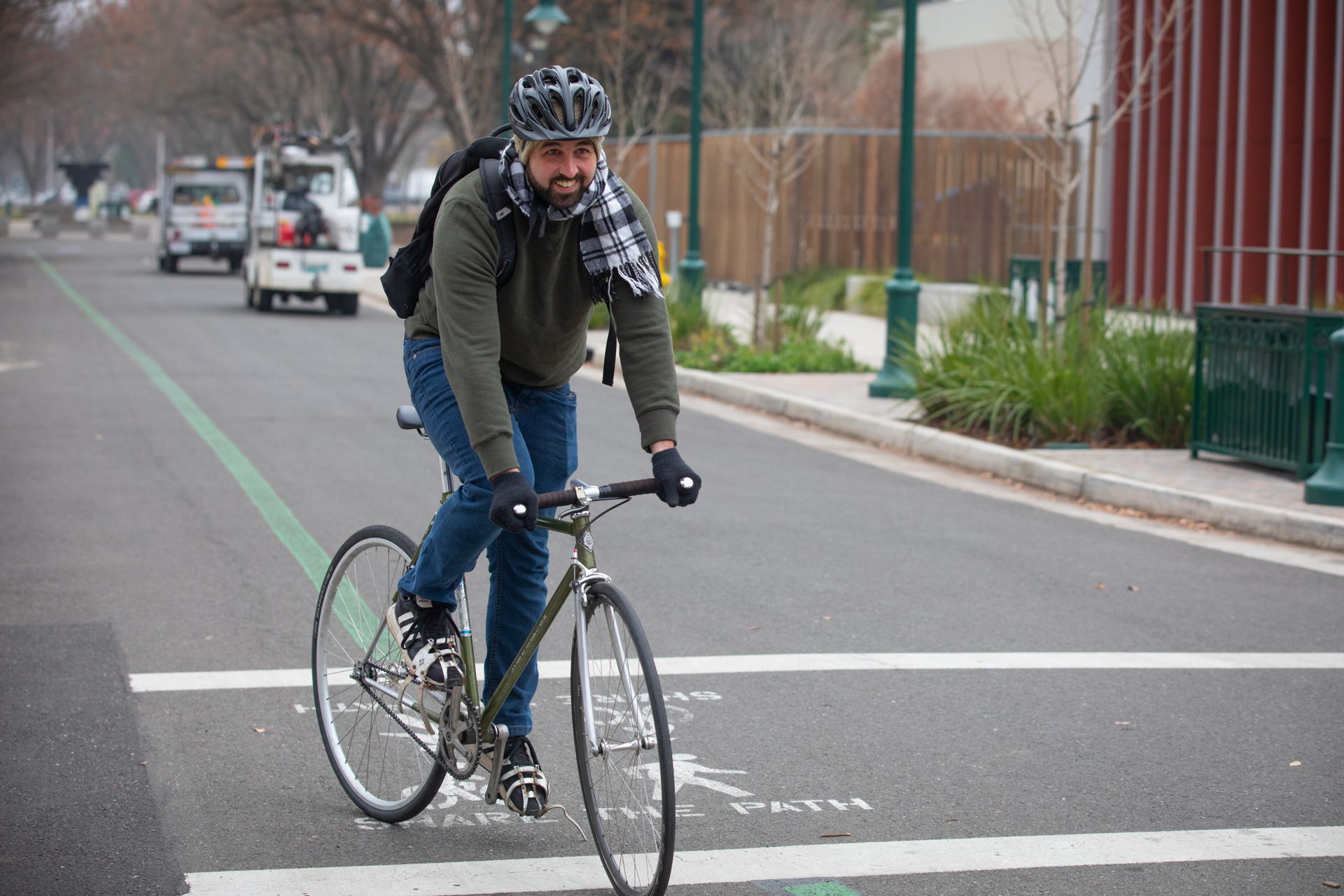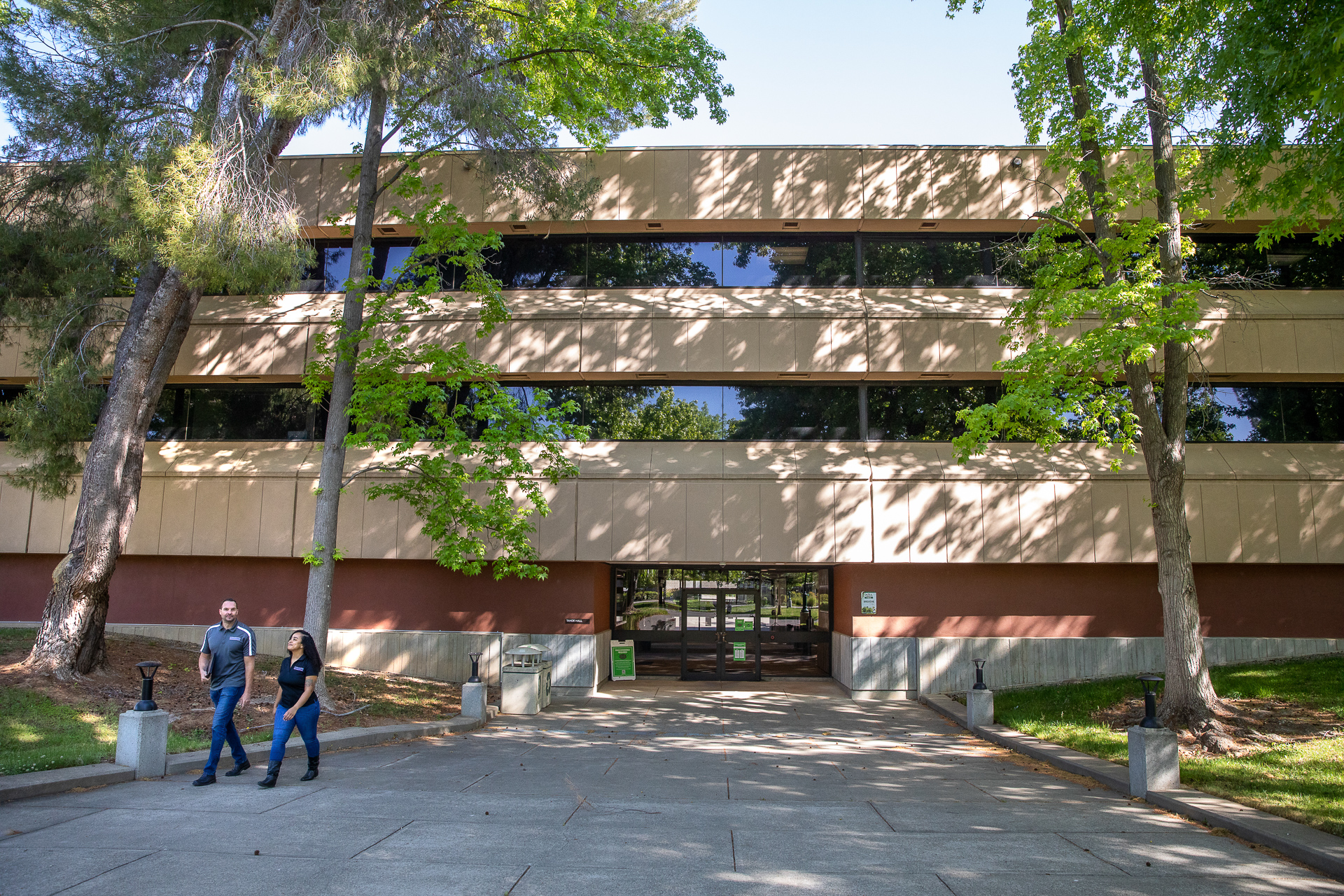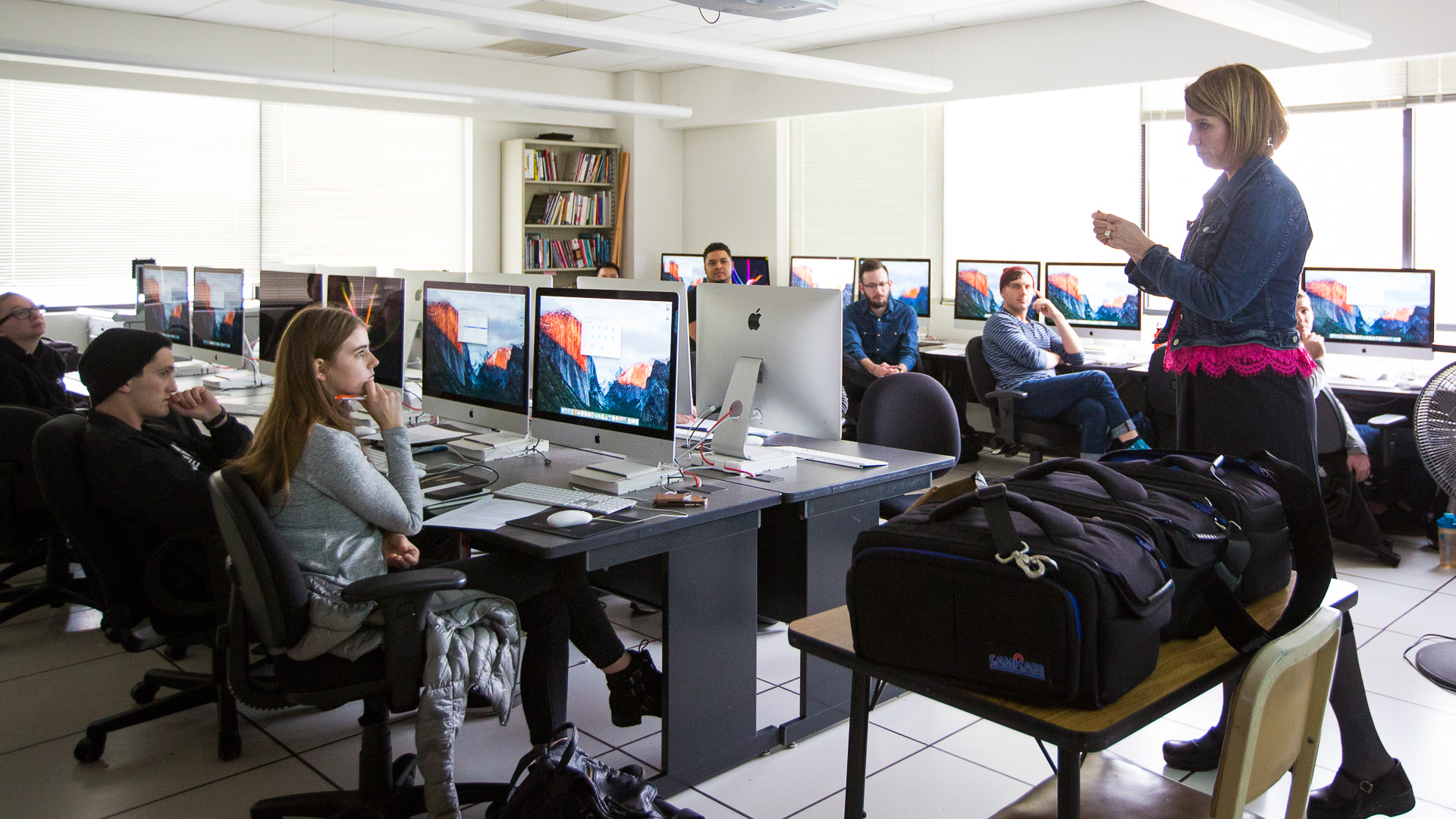Story Content
Letters to 5th-graders let Sac State students get in close touch with the community

January 12, 2023
Sometimes college students can be as impatient as fifth-graders – at least when it comes to getting mail.
Sacramento State students exchanged letters with local elementary school kids this fall as part of the Community Engagement Center’s (CEC) long-running Writing Partners program to boost literacy and promote higher education.
Participating Sac State professors and students say they get as much out of it as the younger ones, and are just as eager for mail.
“At first, I thought, ‘What am I going to have in common with a fifth-grader?’ ” Sac State student Van Nguyen said. “I’m a freshman trying to get through (Biology). I was pretty sure my writing buddy didn’t know what bio was, yet.
“But as each letter came, I got more and more excited, wondering, ‘When is my pen pal going to write to me?’ ”
The CEC and Catherine Gabor, an assistant professor of English from 2004 through 2008, started Writing Partners in 2005 to give University students a chance to teach and learn from younger kids as well as serve the local community.
Over the years, Sac State faculty from across campus – including in Nursing, Teacher Education, Composition, First Year Experience seminars, and the Educational Opportunity Program – have signed up for Writing Partners.
The CEC matches faculty with teachers in the community, who pair University students with elementary kids, usually fifth-graders. During the semester, students exchange a minimum of three letters, some sharing as many as eight.
At the end of the semester, the elementary classes visit the campus and meet their writing buddies.
“We know it helps the elementary students with literacy,” said Noel Mora, CEC Community Partnership coordinator. “Coming back from the pandemic, literacy is at the top of everyone’s minds, so the program, because of its focus on literacy, is not only relevant, but it’s critical.
“It also helps students to start to picture themselves in college and in higher education.”
For many Sac State students, the letter writing becomes more than another class requirement.
On a cold December morning, Professor Maggie Beddow’s pre-credential Bilingual Education class met their writing pals for the first time after a lesson in composting at Sac State Sustainability’s Bioconversion and Agricultural Collaborative, known as the BAC Yard.
“I don’t want to be mean, but I thought you were going to be a girl,” Jezebella, a fourth-grader at Bowling Green Chacon Language and Science Academy, told her pen pal Zane Davidson. “I never heard the name Zane before.”
Davidson took it in stride and laughed. “You’re okay,” he told Jezebella.
Moments later, the two were chatting about their mutual love for the Los Angeles Dodgers.
Davidson and Jezebella, who never had a pen pal before, said they bonded over their favorite show, “Stranger Things,” pets, baseball, and school.
“It was a great opportunity for someone like me, who wants to go into the field of teaching,” Davidson said. “It was good exposure to the age group I want to teach.”
Associate Professor of Communication Studies Kikuko Omori’s students learn to apply the concepts they learn in her Intercultural Communications class, such as ways to accommodate cultural differences, or in this case generational ones.
“We think fifth-graders cannot understand this jargon, or fifth-graders maybe cannot write long letters,” Omori said. “And then my students learn they can, so based on what they received, they change their communication style.”
Vanessa Arnaud lets her honors First Year Experience seminar students throw out academic writing conventions when it comes to crafting letters to their fifth-grade friends.
“They can be completely imaginative in whatever way they want to express themselves,” Arnaud said. “Because if they use formal, academic wording, they’re not going to communicate with the kid on the other end.”
Nguyen, the Sac State freshman, decorated letters for Arnaud’s class with “Minions” and “Cuphead” stickers because she and her writing pal shared a love for the movie and video game.
Another of Arnaud’s students, Audrey Taylor, drew on the margins of her letters and included recipes after learning her writing buddy liked apple pie.
“I got to meet my buddy, and she was a little timid at first, but at the end of the day we were talking more,” Taylor said. “I asked her what she was most excited about that day, and it was spending it with me, which was very sweet.”
Arnaud, who has participated in Writing Partners for 14 years, remembered one sixth-grader who shared a video she made about low self-esteem.
“It was a great example of how someone who comes from an underserved school can produce knowledge and have it heard and have it respected,” Arnaud said. “Writing these letters gives power to the kids, who might not feel like they have a voice.
“My students are just blown away by the letters from these kids.”
Although Writing Partners started with pen-and-paper letters sent via snail mail, it has evolved with the times – and so has security.
Teachers and faculty carefully screen every word to make sure the content is age-appropriate and students aren’t exchanging personal information such as last names, phone numbers, photos, or social media accounts. Letters, handwritten or typed, can also be uploaded onto a digital platform only teachers and faculty can access.
Education Lecturer Pamela Wilber has been part of the Writing Partners program since the beginning. Her students exchange as many as eight letters with their buddies, which she still hand delivers to the teachers after screening them.
“If one of the students decides to come to Sac State when they graduate high school, then I did my job,” Wilber said.
“The Community Engagement Center does a great job supporting faculty and getting them interested in this. It’s a win-win for our Sac State students and our community partners.”
Media Resources
Faculty/Staff Resources
Looking for a Faculty Expert?
Contact University Communications
(916) 217-8366
communications@csus.edu


